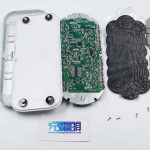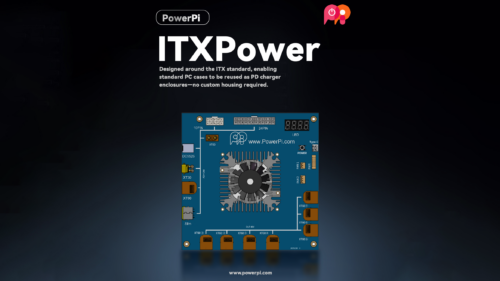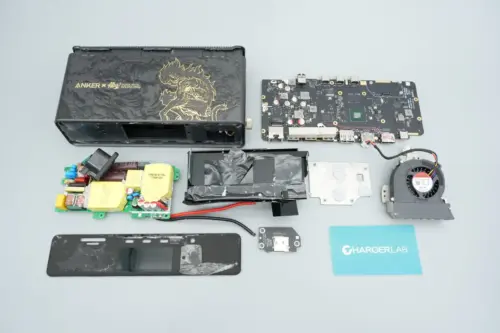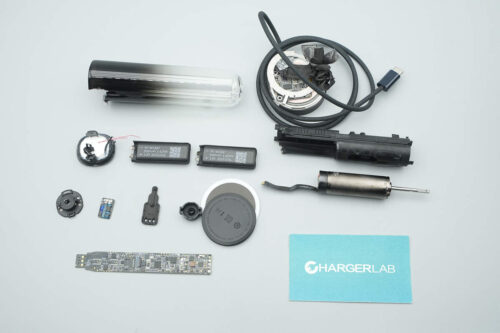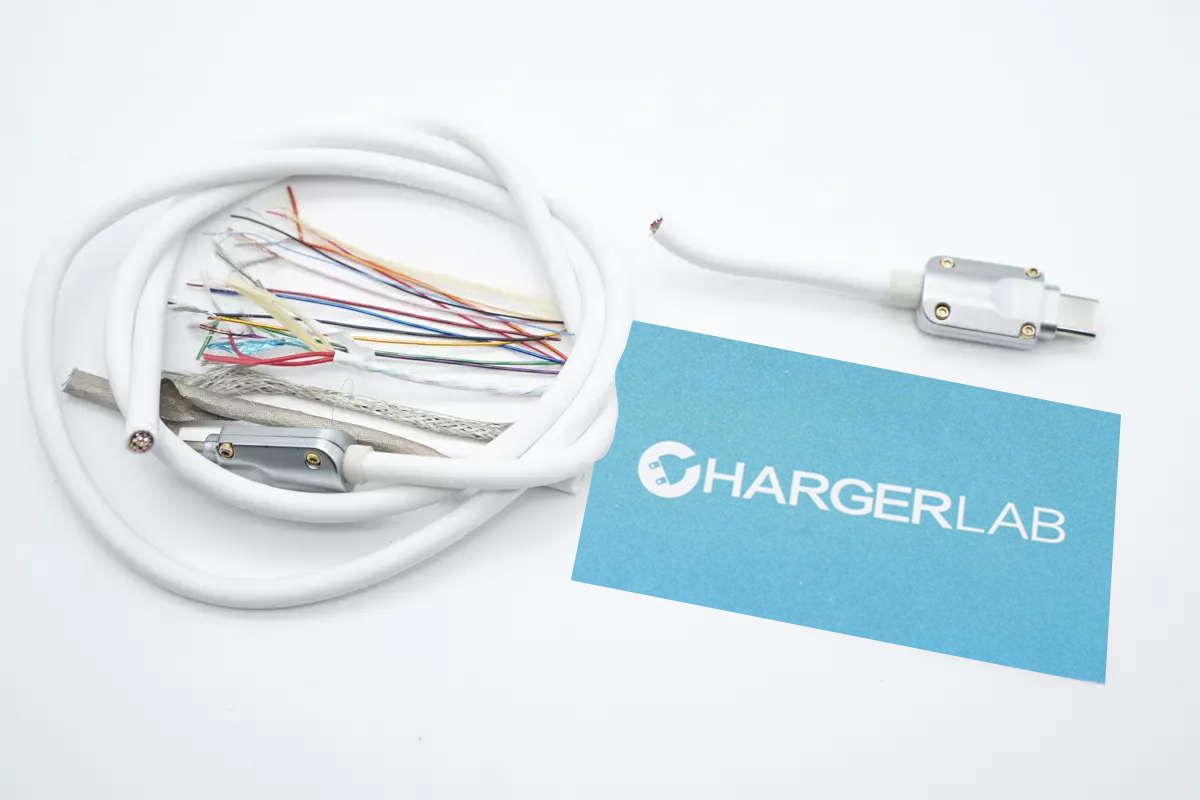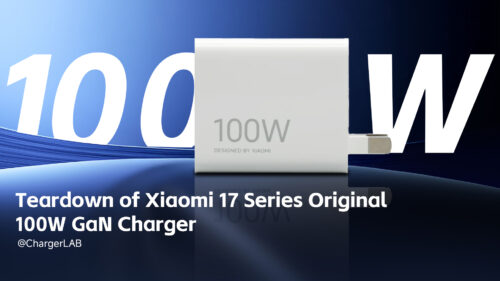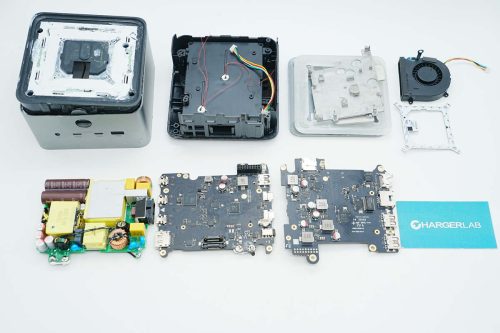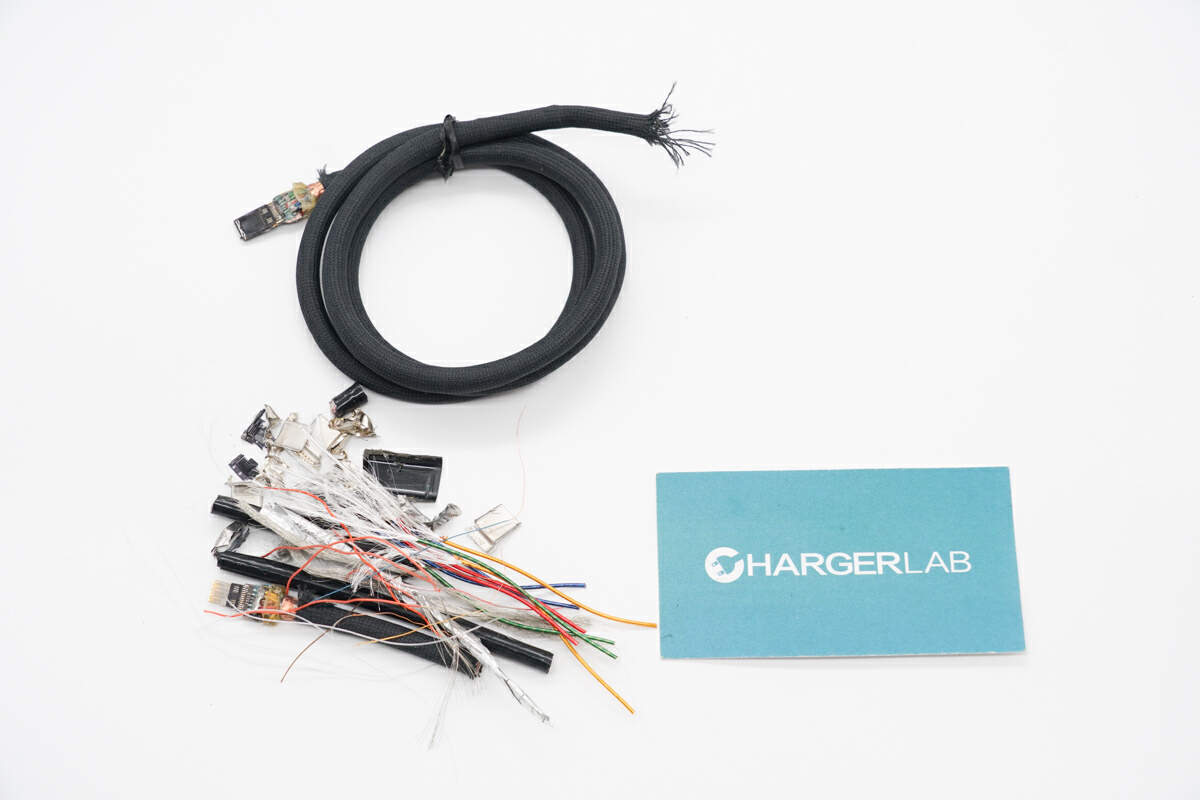Have you ever remembered that apple released Airpower in their special event, which is designed to provide a wireless charger that supports multi-device simultaneous charging and freedom of placement for the user. But unfortunately, the entire project has been canceled in the end.
But recently, a well-known Chinese company Xiaomi released its Multi-coil Wireless Charger, which is very similar to the Airpower.
After got the news, we immediately placed an order for this product. And then immediately disassembled it in detail. So, let’s take a look at what’s inside.
1. The appearance of the Xiaomi multi-coil wireless charger

We can see the packaging box is white, with the Xiaomi logo and the product name, multi-coil wireless charger, are printed on the top.

The product name is also printed on the side.

The specification is stuck on the bottom left corner of the box.

After opening the package, we can see the wireless charger is on the top. There is a paper handle on one side, which is convenient for taking out the wireless charger.

The quick guide is put under the wireless charger.

There are two tiny independent spaces on two sides, used to put 120W fast charger and cable. In addition, there are user’s manual and warranty certificates.

Everything inside the package.

Take out the 120Wcharger, and we can see the specifications on it.
Model: MDY-12-ED
Input: 100-120V~50/60HZ 1.7A
Output: 5V3A, 9V3A, 11V6A, 20V4.8A
Input: 220-240V~50/60HZ 1.7A
Output: 5V3A, 9V3A, 11V6A, 20V6A
The product has passed 3C and Qualcomm QC3.0 certification.

And the cable inside the box will be an A to C cable, which is specially designed to support 6A current.

The overall style of the product is simple. Its top plate is made of silicone. The middle part is made of metal, and the bottom part is made of plastic, just like the structure we have seen on smartphones.

Close-up of the top surface, with a skin-like feel if you touch it.

From the side, we can see it is designed with a curved surface, which looks like a “flat boat on the lake.”

There is also an LED indicator at the center of the front of the product.

The back is the USB-C input port, with black plastic insertion and does not expose the copper. The interface is designed with grooves, make cable connection is more stable.

There is a large non-slip pad on the bottom, the Xiaomi brand is printed in the center, and the specifications are printed on the bottom.

Product Name: Xiaomi multi-coil wireless charger
Model: MDY-13-EJ
Temperature: 0℃-35℃
Product size: 232.4 x 100 x 15.1mm
Input: 9-20V, 6A Max
Output:
Single device: 20W Max
Dual devices: 2 x 20W Max
Three devices: 3 x 20W Max
Total output: 60W Max
Company: Xiaomi Technology Co., Ltd.

The length of the charger is about 23.2cm (9.1 inches).

The width is 99.56mm (3.91 inches).

The thickness is 16.04mm (0.63 inches).

The net weight of the wireless charger is about 471g (1.03 pounds).

Put the Xiaomi 10 on the charger. It can successfully trigger the Xiaomi TURBO CHARGE fast charging.

Using ChargerLAB POWER-Z KT002 to test the input power of wireless charger. The test result is 19.98V 0.98A 19.62W.

Put the Xiaomi Mi 10, Apple iPhone 12 and AirPods Pro on the charger at the same time. The input power is 19.98V 1.21A 24.12W.
2. Teardown of Xiaomi multi-coil wireless charger

Tear off the non-slip pad on the bottom.

There are screws on both sides of the product for fixing.

The outer shell can be opened by removing the screws.

There is a black plastic plate on the fixing column of the top shell.

The coil is covered with a graphite film for heat dissipation and equalizing heat.

The graphite heat dissipation film is wrapped with an insulating plastic film, and the 19 coils are covered with high-temperature tape for insulation.

Close-up of the cooling layer of graphite.

The wireless charging coil is divided into three layers and arranged in six triangles. There are seven coils on the bottom layer, and six coils on the top and middle layers.

There is a thermistor on the coil to detect temperature.

The coil is fixed with double-sided tape.

Close-up of the side of the circuit board. Firstly, it is a magnetic conductive sheet below the coil, and then there is a layer of heat-balancing plate, and finally is the circuit board.

The back of the circuit board is covered with thermally conductive silicone, which is used to dissipate heat from the circuit components.

Remove the thermally conductive silicone covered on the back of the circuit board to expose the circuit board. The upper and lower sides of the circuit board are the solder joints of the coil. The left and right sides of the circuit board are sealed via holes to prevent electromagnetic radiation.

The production date of the circuit board is the eighth week of 2021, and the wireless charger adopts white NPO capacitor resonance.

Close-up of the Type-C female, which is welded in the PCB.

Common mode chokes, used for input filtering.

The Type-C firstly passes the ETEK ET9640 protection IC, and then supplies power to other chips. ETEK ET9640 supports 2.5-28V input voltage range, and has built-in 8mΩ resistance NMOS tube, which can carry 7A current. Peak withstand voltage is 100V, used for input overvoltage and overcurrent protection.

The wireless charging input is powered by Cypress CYPD3171, which belongs to the CCG3PA series. It has a built-in ARM Cortex-M0 processor, 64KB Flash 8KB SRAM, and supports QC4.0, APPLE 2.4A, AFC, BC1.2 and other charging protocols.

Specific Data of Cypress CYPD3171

3PEAK TPT29306 is used for chip communication between different voltages. Suitable for I2C, SMBus, PMBus, MDIO, UART, low-speed SDIO, GPIO. Inside the wireless charger, it is used for the wireless charging master to communicate with Cypress CYPD3171.

Specific Data of 3PEAK TPT29306.

The master control chip of wireless charging adopts Chipsvision CV90365. This chip has built-in PD and QC fast charging, adopts high-voltage technology, supports high-power output, and can support charge three devices at the same time. The GPIO port supports multi-layer and multi-coil wireless charging applications, supports standard 5-15W wireless charging, and supports encryption and decryption private protocols. It is worth mentioning that the integration ofChipsvision CV90365 is quite high.

Information of Chipsvision CV90365.

The passive crystal oscillator with the mark LK20, providing the clock for the wireless charging master control chip.

The external 6.8μH step-down inductor of the wireless charging master control is powered by the master control’s built-in step-down circuit.

FETek FKBB3105, PMOS tube, withstand voltage is -30V, and conduction resistance is 14mΩ, used for power supply control of step-down circuit of wireless charging.

Information of FETek FKBB3105.

MPS MP2229 synchronous rectification step-down converter, which supports 21V input voltage, 6A output current, and has built-in switch tube, used for independent voltage regulation of wireless charging, to adapt to the charging needs of different mobile phones. There are three independent step-downs for three-way wireless charging.

Information of MPS MP2229.

The circuit board is hollowed out and welded with a step-down inductor to reduce the thickness. The step-down inductor adopts alloy inductor.

The second MP2229 step-down converter.

The third MP2229 step-down converter.

3PEAK LMV324B is used for voltage and current demodulation and coil detection.

Information of 3PEAK LMV324B.

Dioo DIO5105 half-bridge driver, used to drive wireless charging power tube. It’s using MSOP10 to package, and withstand voltage is 40V. There are four wireless charging power tube drivers for expansion.

Information of Diaoo DIO5105.

Close-up of the other two drives.

FETEk FKCA3214 dual NMOS tube, which has 30V withstand voltage and 12mΩ conduction resistance. It can form a full bridge for power transmission of wireless charging coil.

Information of FETek FKCA3214.

The second group of wireless charging power tubes.

The third group of wireless charging power tubes.

This is the R020 current detection resistor and four parallel NPO resonant capacitors, which correspond to three groups of wireless charging outputs.

74HC595, which is the 8-bit shift register with three-state output register, used to control the wireless charging coil to turn on. There are four pieces corresponding to different coils.

Adamant AD60K45D3 dual NMOS tube, which withstand voltage is 60V and conduction resistance is 11mΩ, used to switch wireless charging coil. After counting, we found the Xiaomi multi-coil wireless charger adopts 19 adamant MOS.

Information of Adamant AD60K45D3.

The switching of wireless charging coils is all done by Adamant AD60K45D3.

The switching of the wireless charging coil on the other side is also done by Adamant AD60K45D3.

After the entire teardown is completed, let’s take a “family portrait.”
Teardown Summary of ChargerLAB
The product adopts a flat appearance, and the overall style is very simple. The top of the product is made of silicone, and the bottom case is made of aluminum alloy.
The product has as many as 19 built-in wireless charging coils, so the problem of heating cannot be ignored. Thealuminum alloy bottom shell is not only to make the product more stable to use, but to help heat dissipation. We alsofound that the front and back of the wireless charging module were respectively pasted with graphite heat dissipation film and thermally conductive silicone, and the silicone was pasted to the aluminum alloy shell for heat conduction. In addition, there is a heat-balancing plate between the circuit board and the magnetic conductive sheet.
This wireless charger’s master control chip uses Chipsvision CV90365, and has three wireless charging circuits, corresponding to three buck circuits and three drive tubes. The three buck converters all use MPS MP2229, and FETekFKCA3214 is used for driving tubes. The input terminal is equipped with ETEK ET9640 overvoltage and overcurrent protection IC, and adopts Cypress CYPD3171 with the master control to control the input voltage.
In addition, there are 19 built-in wireless charging coils, using Adamant AD60K45D3 dual NMOS tubes for coil switching, and using multiple 74HC595 8-bit shift registers to control the coil opening. No matter where the device is placed on the charger, it can be wirelessly charged.
In general, Xiaomi’s multi-coil wireless charger is pretty good, and the heat dissipation measures are also in place. For such a product, do you think it is worth getting?

